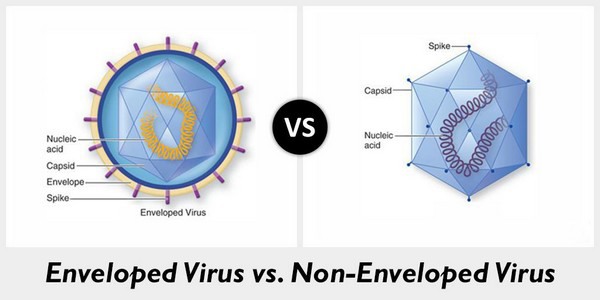The conversation and discussion on the topic of viruses has now become more pertinent than ever, not only in human health, but also in the vegetable cultivation sector.
Diseases caused by the Cucumber Green Mottle Mosaic Virus (CGMMV) has been plaguing the Dutch cucumber cultivation sector for years and it also seems like the Tomato Brown Rugose Fruit Virus (ToBRFV) is here to stay. Similarly, will the current pandemic-causing Covid-19 virus become endemic? These are burning questions of which an answer will not be clear anytime soon.
Tobamoviruses
CGMMV, ToBRFV and the Tomato Mosaic Virus (ToMV) are categorised by horticultural scientists as Tobamoviruses. Viruses falling under this category of viruses all share a similar trait; they are persistent and hardy, difficult to kill and not susceptible to commonly used disinfectants.
So why are these Tobamoviruses so tough? The difference is all in the structure of the viruses. In general, viruses can be categorised into two groups: enveloped and non-enveloped viruses. Enveloped viruses, such as coronaviruses are wrapped in a weak, fatty membrane which makes them susceptible to common disinfectants. In contrast, Tobamoviruses don’t have this fatty membrane. Instead, these non-enveloped viruses have a thick protein wall encapsulating their genetic material, thus giving them not only the ability to survive attacks from most disinfectants, but also give them the ability to survive for long periods outside of their host.

Biofilm
The spread of viruses is generally mechanical and as they can also be spread in water, it only takes one infected plant to spread the virus throughout the entire greenhouse. Biofilms, a slime layer created by bacteria can also act as a protective layer for viruses allowing them to ‘hide’ from disinfectants and survive for longer periods of time.
A good example of the protective power of biofilms is the use of chlorine. Chlorine is a widely used disinfectant and has been used for decades for disinfection of irrigation systems. It is able to eliminate free-floating viruses, but due to the fact that it doesn’t penetrate or break down biofilms, viruses are still able to survive and hide inside biofilm.
This makes Tobamoviruses even more dangerous as they not only can easily survive in irrigation water and remain infectious for a long time, but they can also thrive in biofilms. It should not be forgotten that these viruses are also transmitted outside of the irrigation systems, thus good hygiene protocols need to be implemented.
Cleaning
Intra Hydropure can clean the irrigation  systems, and it also has a strong biocidal activity. The product removes the biofilm till the very last dripper or sprayer, and prevents viruses, bacteria and fungi from seeking protection in this layer of pollution. After reaction with biofilm and micro-organisms, Intra Hydropure dissolves into water and oxygen thus leaves no residues in the irrigation water.
systems, and it also has a strong biocidal activity. The product removes the biofilm till the very last dripper or sprayer, and prevents viruses, bacteria and fungi from seeking protection in this layer of pollution. After reaction with biofilm and micro-organisms, Intra Hydropure dissolves into water and oxygen thus leaves no residues in the irrigation water.
For more information:
Intracare
Voltaweg 4
5466 AZ Veghel
Netherlands
T +31 (0)413 354 105
F +31 (0)413 362 324
[email protected]
www.intracare.nl
